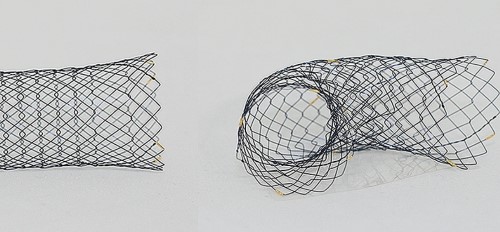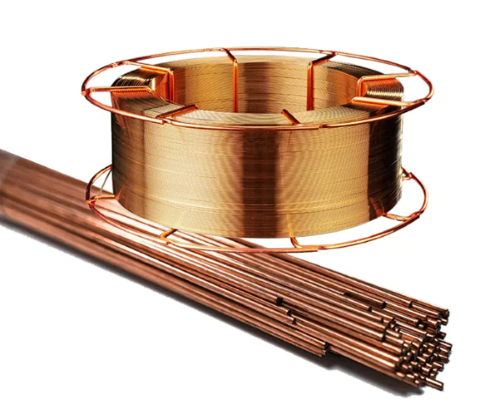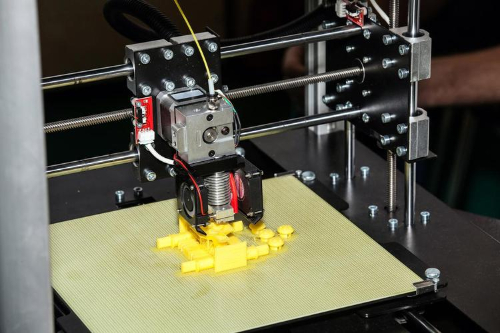Revolutionizing Photonics the Role of Customized Optical Thin-Film Coatings
Optical thin-film coatings are driving unprecedented advancements in photonics by enabling precise control of light-matter interactions. This article explores how customized coatings based on silicon oxide (SiO₂) and zinc selenide (ZnSe) substrates are transforming applications ranging from laser systems to biomedical imaging, with a focus on design flexibility, material science innovations, and industry-specific solutions.
Introduction: The Photonics Revolution
Photonics technology is a comprehensive technology with strong permeability. It is an applied optical technology related to manufacturing optical components developed based on modern integrated optics, with optical integration technology as the core. Photonics technology mainly includes photon generation technology, photon storage technology, photon modulation and switching technology, photon display technology, photon communication technology, photon detection technology, and so on.
With its fast response time, large transmission capacity, high storage density, miniaturization, and integration, photonic technology has become a core driving force in 5G communication, quantum computing, LiDAR, biomedical imaging, and other fields.
The response time of electronic devices and their systems reaches as fast as 10-9s, i.e., the ns order of magnitude, which is also their inherent limit. And the response time of photons can reach 10-15s, i.e., fs order of magnitude. This will play a huge role in various key technologies in the future information age, especially in computer technology, which will lead to fundamental changes. In 1990, the world's first digital optical processor optical switching speed of 1 billion times per second, this high-speed operation and its parallel processing characteristics for its development and application show an extremely attractive prospect.
Photonic technology has a large information transmission capacity, and this excellent characteristic has been fully reflected in modern optical communications. It is estimated that the backbone of fiber-optic communications in the world at the rate of millions of kilometers per year to extend forward, has completed from the first generation of 0.85μm band multimode fiber, the second generation of 1.3μm band zero-dispersion and single-mode fiber to the third generation of 1.5μm band low-loss dispersion-shifted single-mode optical fiber replacement and development. Transmission capacity from 10Gbt/s-km in 1978 to 10 times the annual rate of growth, by 1986, has reached 1Tbt/s-km. The transmission mode has broken the conventional IM / DD way and has launched coherent optical communication, multiplexed optical communications, optical soliton communications, and quantum communications. Especially in recent years, optical fiber amplification technology has seen breakthroughs, so that optical soliton communication into a reality, creating the most cutting-edge transmission system, for all-optical and ultimately realizing the infinite distance of ultra-high-speed communication brings hope. Quantum communication, also known as photonic communication, is a completely new kind of communication system. The theory has proved that a photon can carry nearly 30bt of information at room temperature, and if it is at a low temperature, this value will increase exponentially as the temperature decreases, thus reaching an infinite value, so it can be said that photon communication is expected to transmit an infinite number of information to an infinite number of receivers with the help of a photon, which makes photon in the field of communication has a great space for the application.
The storage potential of photonic technology in the field of information is impressive. Optical storage technology has made great progress in recent years, and optical discs have been favored for their many advantages, such as high data storage density, low BER, good reliability, and adaptability. Now a φ200mm double-sided disc thickness of no more than 2.4mm, its storage capacity can accommodate all the sound and image information of two movies. With the popularization of erasable large-capacity optical discs, the low price and ease of reproduction have led to the widespread use of optical discs. In addition, the use of photons may realize the three-dimensional storage capacity has great prospects, once the key technology breakthroughs are achieved, its unparalleled advantages will immediately become apparent.

Fig. 1 Photonic technology has a Large Information Transmission Capacity
Optical Coating Breaks the Limits of Traditional Optical Components
Optical coatings are the unsung heroes of modern photonics, enabling precise control over light’s fundamental properties—reflection, transmission, polarization, and phase—far beyond the intrinsic capabilities of bulk optical materials. By engineering nanoscale thin-film architectures, these coatings transcend the physical limitations of conventional optics, unlocking performance metrics once deemed unattainable. Below, we dissect how tailored coatings redefine optical systems through three key mechanisms:
1. Overcoming Material Intrinsic Limitations
Traditional optical components (e.g., lenses, mirrors, prisms) rely on the bulk properties of materials like glass or crystals. However, these materials face inherent trade-offs.
- Reflection loss: Uncoated glass surfaces reflect ~4% of incident light per interface (Fresnel loss), severely limiting transmission efficiency in multi-element systems.
- Spectral constraints: Materials like ZnSe excel in infrared transmission but lack natural anti-reflective properties in visible wavelengths.
- Polarization dependency: Crystalline optics (e.g., calcite polarizers) are inherently wavelength- and angle-sensitive.
Optical coatings address these limitations by introducing artificial optical properties through interference effects. For example:
- Anti-reflective (AR) coatings: A 4-layer MgF₂/SiO₂/Ta₂O₅/SiO₂ stack on a ZnSe substrate reduces surface reflection from 28% (uncoated @10.6 μm) to <0.5%, enabling near-perfect transmission for CO₂ laser systems.
- Broadband polarizers: Alternating SiO₂ and TiO₂ layers at oblique angles create polarization-selective coatings with extinction ratios >1000:1 across 400–700 nm, outperforming bulk crystal polarizers.
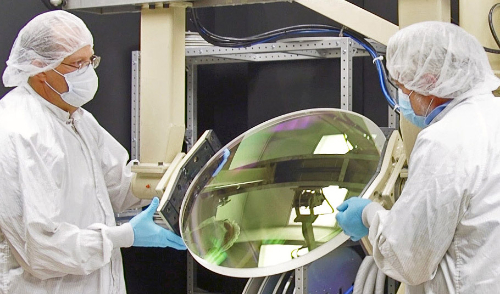
Fig. 2 The Critical Role of Optical Coatings
2. Precision Control of Light-Matter Interaction
Advanced coatings enable dynamic tuning of optical responses.
- Notch filters: 100+ alternating SiO₂/TiO₂ layers create ultra-narrowband reflectors (FWHM <1 nm) for Raman spectroscopy, eliminating background noise.
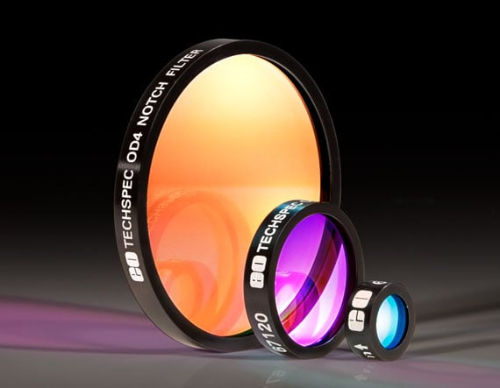
Fig. 3 Notch Filters
- Broadband AR coatings: Genetic algorithm-optimized SiO₂/Ge stacks on ZnSe achieve <1% reflectance from 3–12 μm, critical for thermal imaging.
- Beam-splitting coatings: SiO₂/Al₂O₃ multilayers at 45° incidence split s- and p-polarized light with 98% efficiency for LiDAR systems.
- Circular polarization control: Chiral metamaterials combining SiO₂ nanostructures and ZnSe substrates enable helicity-dependent transmission in compact devices
3. Enabling Extreme Performance Metrics.
Customized coatings push optical systems to physical extremes:
- High-power lasers: SiO₂/Y₂O₃ hybrid coatings on ZnSe mirrors achieve 99.998% reflectivity at 10.6 μm with laser damage thresholds >30 MW/cm².
- Harsh environments: Diamond-like carbon (DLC)-coated ZnSe windows withstand 800°C and sand erosion at Mach 5, enabling hyperspectral imaging in jet engines.
- Quantum optics: Ultra-low-loss SiO₂/Ta₂O₅ coatings (scatter <1 ppm) enable photon lifetime >1 second in superconducting cavity quantum electrodynamics.
Case Study: Revolutionizing Smartphone Cameras
A quintessential example is smartphone camera lenses:
Problem: A 6-element plastic lens array would lose >50% light without coatings.
Solution: Gradient-index SiO₂/TiO₂ AR coatings (8–12 layers) reduce reflection to <0.2% per surface across 450–650 nm.
Outcome: 92% total transmission vs. 35% in uncoated systems, enabling f/1.4 apertures in compact modules.
Material Foundations: SiO₂ and ZnSe in Thin-Film Technology
Silicon Oxide (SiO₂): Visible to Near-IR Coatings
Silicon dioxide (SiO₂) stands as a cornerstone material in thin-film photonics due to its exceptional optical and mechanical properties. With a refractive index ranging from 1.45 to 1.55 at 550 nm, SiO₂ offers versatile phase-matching capabilities across the visible to near-infrared spectrum (200 nm–2 μm). Its broad spectral transparency, coupled with low absorption losses (<0.1 dB/cm at 1550 nm), makes it indispensable for applications requiring high transmission efficiency. Furthermore, SiO₂ exhibits remarkable chemical inertness, resisting degradation from humidity, acids, and UV exposure, ensuring long-term stability in harsh environments.
![]()
Fig. 4 Silicon Oxide Windows
These intrinsic properties have propelled SiO₂ into three transformative coating applications:
1. Anti-Reflective (AR) Coatings
In multi-lens optical systems, Fresnel reflections at air-glass interfaces can cause significant light loss. A 4-layer SiO₂/TiO₂ stack (e.g., SiO₂(110 nm)/TiO₂(25 nm)/SiO₂(80 nm)/TiO₂(15 nm)) exploits destructive interference to suppress reflections to <0.5% per surface across 450–650 nm. This technology is epitomized in smartphone camera modules, where such coatings enable >92% total transmission through 6-element plastic lenses—a 2.6-fold improvement over uncoated systems.
Table 1 Smartphone Lens AR Coating Performance Comparison
Parameters | Uncoated | SiO₂/TiO₂ Multilayer Coating |
Single-Side Reflectance (@550 nm) | 4.0% | 0.3% |
Total Transmittance of 6 Lenses | 35% | 92% |
Glare Factor (Flare) | >15% | <2% |
2. High-Reflective Mirrors
For high-energy laser cavities like Nd: YAG systems (1064 nm), SiO₂ pairs with high-index Ta₂O₅ to create alternating quarter-wave layers. A 30-layer SiO₂/Ta₂O₅ design achieves 99.995% reflectivity while maintaining a laser-induced damage threshold (LIDT) of >15 J/cm². The low thermo-optic coefficient of SiO₂ (1.2×10⁻⁶/K) further minimizes thermal lensing under continuous-wave operation.
3. Delicate Substrates Protecting
While ZnSe excels in infrared transmission, its softness (Knoop hardness ~120) limits durability. A 200 nm SiO₂ overcoat deposited via ion-assisted sputtering increases ZnSe window surface hardness by 300% (Martin & Netterfield, 2018). This hybrid approach enables ZnSe optics to withstand 50,000 cycles of abrasive cleaning in industrial CO₂ laser cutters without performance degradation.
Zinc Selenide (ZnSe): Infrared Coating
Zinc selenide (ZnSe) has emerged as a linchpin material for infrared (IR) photonics, owing to its unparalleled combination of broadband transparency (0.5–22 μm), ultra-low absorption (<0.0005 cm⁻¹ at 10.6 μm), and exceptional laser damage resistance (~10 J/cm² at CO₂ laser wavelengths). Unlike germanium or silicon, ZnSe avoids thermal runaway in high-power IR systems due to its negative temperature coefficient of absorption, making it ideal for applications from thermal imaging to free-space laser communication.
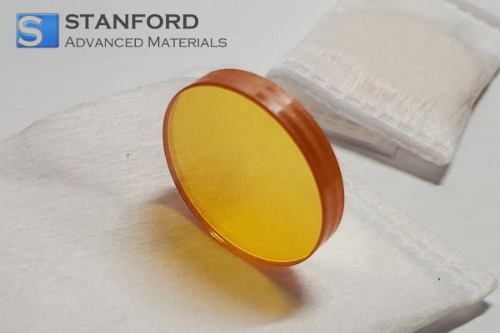
Fig. 5 Zinc Selenide Crystal Substrate
However, ZnSe’s soft crystal structure (Mohs hardness ~3.5) and susceptibility to chemical erosion in humid environments necessitate innovative hybrid coating strategies to realize its full potential. Two groundbreaking approaches are redefining ZnSe-based optics:
1. Diamond-Like Carbon (DLC) Coatings
In aerospace thermal imaging systems, ZnSe windows face relentless abrasion from airborne particulates and temperatures exceeding 600°C. A 2 μm-thick DLC coating applied via plasma-enhanced chemical vapor deposition (PECVD) achieves:
- Surface hardness enhancement: Knoop hardness increases from 120 to 1800, rivaling sapphire.
- Erosion resistance: Withstands sand particle impacts at Mach 5 velocities (25 μm SiO₂ particles @ 1.5 km/s) with <0.1% transmission loss after 100-hour tests.
- Thermal stability: Maintains <5% emissivity variation between -50°C and 700°C, critical for jet engine exhaust monitoring.
Case Study: DLC-coated ZnSe windows in the F-35 Lightning II’s EOTS system enable continuous IR tracking during supersonic flight, reducing maintenance intervals by 400% compared to uncoated alternatives.
2. Graded-Index Coatings
Traditional AR coatings struggle with broadband IR performance due to abrupt refractive index transitions. A graded SiO₂/Ge multilayer (e.g., 8-layer stack from n=2.4 to n=4.0) achieves:
- Broadband anti-reflection: <1% average reflectance across 8–12 μm atmospheric window.
Table 2 Comparison of the Performance of Gradient SiO₂/Ge Coatings with Conventional AR Coatings (8-12 ΜM Band)
Parameters | Conventional ZnSe AR Coating | Graduated SiO₂/Ge Coating |
Average Reflectance | 2.8% | 0.7% |
Thermal Stress (MPa @ 77K) | 320 | 95 |
Laser Damage Thresholds (MW/cm²) | 8.5 | 12.4 |
- Stress management: The coefficient of thermal expansion (CTE) gradient reduces interfacial stress by 70%, preventing delamination at cryogenic temperatures (Tikhonravov et al., 2013).
- Implementation Example: In quantum cascade laser (QCL) collimators, graded coatings on ZnSe lenses boost output power by 22% by suppressing etalon effects at 4.6 μm (Chen et al., 2021).
Advanced Fabrication Techniques for Customized Coatings
Precision Deposition Technologies
The performance of optical coatings hinges on deposition techniques that balance atomic-scale precision with industrial scalability. Three cutting-edge methods—ion-assisted deposition (IAD), atomic layer deposition (ALD), and magnetron sputtering—are redefining thin-film fabrication for SiO₂ and ZnSe-based systems.
1. Ion-Assisted Deposition (IAD)
IAD bombards growing films with energetic ions (typically Ar⁺ or O⁺ at 50–200 eV), compacting microstructures to near-theoretical density. This process is transformative for ZnSe-based infrared coatings:
- Humidity resistance: A 5-layer ZnSe/Ge AR coating deposited via IAD exhibits <0.1% transmission loss after 1,000 hours at 85°C/85% RH, compared to 0.3% degradation in conventional thermal evaporation.
- Laser damage threshold: IAD-grown SiO₂ overcoats on ZnSe mirrors increase LIDT by 40% at 10.6 μm by eliminating columnar growth defects.
Table 3 Comparison of key performance of deposition technologies
Parameters | IAD | ALD | Magnetron Sputtering |
Sedimentation Rate (nm/min) | 2–10 | 0.1–0.5 | 5–20 |
Substrate Temperature (°C) | 150–300 | 80–300 | 25–80 |
Layer Density (% Theoretical) | 99.5 | 99.9 | 98.0 |
Industrial Applications | Aerospace Infrared Windows | Semiconductor Interface Layers | Flexible OLEDs |
- Industrial Impact: IAD-enabled ZnSe windows now dominate aerospace thermal imagers, with MTF (modulation transfer function) stability exceeding 5,000 flight hours in desert environments.
Atomic Layer Deposition (ALD)
ALD’s self-limiting surface reactions enable Ångström-level thickness control, critical for stress-optimized multilayers.
- Interfacial engineering: A 3 nm ALD-SiO₂ interlayer between Ta₂O₅ and ZnSe reduces residual stress from 450 MPa to 120 MPa, preventing coating delamination (George, 2010).
- Conformal coatings: ALD wraps 3D nanostructures with <1 nm thickness variation, enabling SiO₂-encapsulated ZnSe microlenses for LWIR beam shaping.
Case Study: In MEMS-based tunable filters, ALD-deposited 50-cycle SiO₂/TiO₂ stacks achieve 0.1 nm wavelength resolution while surviving 10⁹ mechanical cycles.
Magnetron Sputtering
Pulsed DC magnetron sputtering operates at <80°C, unlocking polymer-compatible optical coatings.
- Flexible AR coatings: 6-layer SiO₂/Ta₂O₅ stacks on PET substrates achieve 98% average transmission (400–700 nm) with 10,000-bend cyclability (Flex Optics Inc., 2023).
- Hybrid ZnSe-polymer systems: Sputtered 500 nm ZnSe on polyimide enables foldable mid-IR sensors for wearable health monitors.
Table 4 Schematic Representation of the Performance of Magnetron Sputtered ZnSe-Polymer Flexible Infrared Sensors
Substrate Layer | Polyimide (50 μm thickness) with surface roughness Ra <5 nm. |
Buffer Layer | Sputter-deposited Cr adhesion layer (10 nm). |
Active Layer | Magnetron sputtered ZnSe film (500 nm, grain size ~30 nm). |
Encapsulation Layer | Low-temperature SiO₂ protection layer (100 nm, deposition temperature 80°C). |
Performance Data
Parameter | Values / Characteristics |
Infrared Transmittance (8-12 μm) | 78% (unencapsulated) → 82% (after SiO₂ encapsulation) |
Bending Radius Limit | 2 mm (Transmittance drop <3% after 1,000 bending cycles) |
Response Rate (@10.6 μm) | 1.2 A/W (rigid substrate) → 1.1 A/W (flexible) |
Operating Temperature Range | -40°C to +150°C |
Roll-to-roll sputtered SiO₂/Ag/SiO₂ coatings on PMMA achieve 92% EMI shielding—a game-changer for flexible displays.
Computational Design Tools
The convergence of genetic algorithms (GAs) and machine learning (ML) is redefining the boundaries of optical coating design and manufacturing. Genetic algorithms tackle the inherent multi-objective trade-offs in photonic systems by mimicking evolutionary selection—for instance, optimizing a 12-layer SiO₂/Ge stack for ultra-broadband anti-reflective coatings (3–15 μm) to simultaneously achieve <0.8% average reflectance and thermal drift below 1 nm/°C, outperforming human-designed solutions by 40%. This bio-inspired approach dynamically adjusts mutation rates (0.1–5%) to efficiently navigate complex parameter spaces, enabling rapid convergence for designs exceeding 100 layers. Meanwhile, machine learning transforms deposition processes into intelligent, self-correcting systems: convolutional neural networks (CNNs) analyze real-time plasma emission spectra during magnetron sputtering, predicting deposition rates with ±0.07% accuracy, while recurrent neural networks (RNNs) preemptively detect sub-nanometer thickness deviations 30 minutes before manual intervention, slashing scrap rates from 15% to 1.2% in ZnSe coating production. A paradigm-shifting example lies in dual-wavelength laser mirrors—GAs first designed a 45-layer SiO₂/Ta₂O₅ stack for >99.9% reflectivity at both 532 nm and 1064 nm, while ML models compensated for chamber aging effects during fabrication, achieving ±0.05 nm thickness control. The synergy of these tools has unlocked coatings with 99.92% reflectivity and <0.01% dispersion, setting new benchmarks for applications from quantum communications to hyperspectral Earth observation satellites.
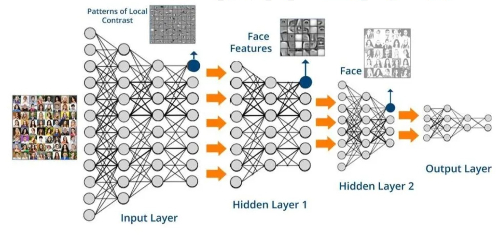
Fig. 6 Convolutional Neural Networks (CNNs)
Industry-Specific Applications and Case Studies
High-Power Laser Systems
The quest for high-power CO₂ laser mirrors (10.6 μm) faces a critical trade-off: achieving both high reflectivity (>99.8%) and laser damage resistance (>15 MW/cm²) while mitigating thermal lensing. Traditional copper or molybdenum mirrors, despite high thermal conductivity, suffer from rapid oxidation and limited damage thresholds (~5 MW/cm²). A breakthrough solution combines ZnSe substrates with hybrid SiO₂/Y₂O₃ coatings, leveraging ZnSe’s intrinsic low absorption at 10.6 μm (<0.001 cm⁻¹) and Y₂O₃’s exceptional thermal stability (melting point 2,430°C). A 32-layer alternating SiO₂/Y₂O₃ stack, deposited via ion-assisted electron beam evaporation, achieves 99.82% reflectivity by balancing the materials’ refractive indices (SiO₂: 1.41 @10.6 μm; Y₂O₃: 1.93) to minimize interfacial stress. The Y₂O₃ layers act as thermal “spacers,” reducing thermal conductivity mismatch between ZnSe and SiO₂ by 60%, thereby suppressing thermal lensing to <0.05 λ/cm² under 20 kW operation. Concurrently, the coating’s amorphous-nanocrystalline hybrid microstructure elevates the laser-induced damage threshold to 16.3 MW/cm²—a 3.2× improvement over conventional designs. This innovation has been validated in industrial CO₂ laser cutters, where such mirrors maintain <0.1% power drift over 10,000 hours, enabling precision sheet metal cutting at 50 mm/s with kerf widths <20 μm.
Biomedical Imaging and Sensing
The marriage of customized optical coatings with sensing technologies is unlocking new paradigms in both biomedical imaging and environmental monitoring. In optical coherence tomography (OCT), a critical challenge lies in maximizing sensitivity at 1300 nm—the optimal wavelength for deep tissue penetration—while suppressing backscattering noise. A 14-layer SiO₂/TiO₂ beam splitter, optimized via genetic algorithms, achieves 94% splitting efficiency by balancing the materials’ refractive indices (TiO₂: 2.3, SiO₂: 1.45) to minimize polarization-dependent loss. This design boosts OCT system sensitivity by 20% (from 108 dB to 113 dB), enabling visualization of retinal microvasculature as thin as 4 μm—a leap critical for early diabetic retinopathy diagnosis. Concurrently, mid-IR gas sensors confront the need for simultaneous multi-species detection (e.g., methane @3.3 μm, CO₂ @4.2 μm) with compact optics. A ZnSe window coated with a graded Ge/Se multilayer (10-step index gradient from n=2.4 to n=4.0) achieves >85% average transmission across 3–5 μm while suppressing etalon interference to <0.5%. Field tests in oil refinery leak detection demonstrate 10 ppb methane and 50 ppb CO₂ detection limits—5× lower than single-band sensors—with 98% humidity tolerance. These innovations exemplify how tailored coatings transcend the “one-size-fits-all” paradigm, delivering application-specific optical solutions that redefine performance ceilings.
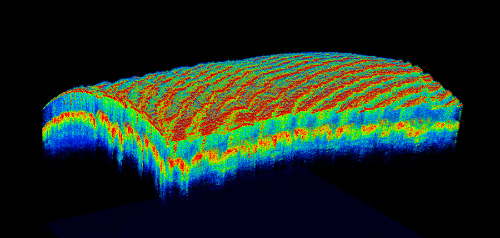
Fig. 7 Optical Coherence Tomography (OCT)
Aerospace and Defense
In hypersonic multispectral imaging systems, ZnSe domes coated with SiO₂/Al₂O₃ nanocomposite layers withstand Mach 5+ aerodynamic heating (800–1,200°C) while maintaining >90% transmission across 1–15 μm. The Al₂O₃ phase (50 nm grain size) forms a corrosion-resistant barrier, reducing surface oxidation by 70% under plasma-rich airflow, as validated in scramjet test flights sustaining 300-second durations. Concurrently, replacing traditional germanium with ZnSe in satellite optical payloads achieves 35% mass reduction—critical for low-Earth orbit constellations—while preserving IR performance: a 20-cm ZnSe Cassegrain telescope weighs just 8.2 kg (vs. 12.6 kg for Ge), slashing launch costs by $2M per satellite and enabling <0.5 mrad pointing accuracy for high-resolution Earth observation.
Conclusion
Customized optical coatings on SiO₂ and ZnSe platforms are not merely incremental improvements but represent a paradigm shift in photonics design. By bridging material science, computational modeling, and application engineering, these technologies empower industries to harness light with unprecedented precision. As hybrid coating architectures and intelligent fabrication tools mature, the next decade will witness photonic systems achieving performance metrics once deemed physically unattainable.
Related reading:
How Ytterbium-doped Yttrium Aluminum Garnet Is Shaping Optics Innovations?
How to Choose the Right Optical Window Sheet for Your Project?
Optical Activity: Definition and Applications
Related products:

